calsfoundation@cals.org
Engagement at Cane Hill
aka: Engagement at Canehill
aka: Engagement at Boston Mountains
|
Location: |
|
|
Campaign: |
|
|
Date: |
November 28, 1862 |
|
Principal Commanders: |
Brigadier General James G. Blunt (US); Brigadier General John S. Marmaduke (CS) |
|
Forces Engaged: |
Department of Missouri (US); two cavalry brigades (CS) |
|
Estimated Casualties: |
Two (US); unknown (CS) |
|
Result: |
Union victory |
The Engagement at Cane Hill on November 28, 1862, was the prelude to the Battle of Prairie Grove fought on December 7, 1862. Union brigadier general James G. Blunt, with 5,000 men and thirty cannon in the Kansas Division of the Army of the Frontier, surprised 2,000 Confederate cavalry and six cannon under Confederate brigadier general John S. Marmaduke while they were gathering winter supplies. The struggle lasted nine hours and covered about twelve miles over the wooded and rocky terrain between Cane Hill (Washington County) and the Cove Creek valley. While it was a Union victory, casualties were light on both sides. Blunt’s decision to remain at Cane Hill set in motion the entire Confederate force at Fort Smith (Sebastian County), leading to the Battle of Prairie Grove.
Major General Thomas C. Hindman, commander of the Confederate Army of the Trans-Mississippi, ordered Marmaduke to advance into the fertile agricultural region known as Cane Hill on November 9. The Southerners arrived without incident and scoured the communities of Boonsboro and Newburg along with the area’s gristmills for food. After five days, the Confederate cavalry returned to the Arkansas River Valley hauling a large supply of much-needed meat, grain, and forage.
Only a week passed before Hindman ordered Marmaduke’s cavalry north to the Cane Hill region for another load of food supplies. Blunt felt compelled to act when he discovered the Confederate cavalry at Cane Hill for the second time in a couple of weeks. On November 27, Thanksgiving Day, he left the Union camp at Flint Creek in Benton County with a force of 5,000 soldiers and thirty pieces of artillery and marched south, stopping for the night near Rheas Mills (Washington County). The Union march on Cane Hill continued early the next morning along a seldom-used road across steep terrain, which slowed their progress.
A Confederate patrol spotted Union cavalry near the community of Cincinnati, northwest of the Cane Hill ridge, on November 27 and reported its findings to Marmaduke. He decided to send the food supplies toward Fort Smith and await the arrival of the Union command. At about 10:00 the next morning, the fighting began in earnest when Colonel William F. Cloud, in command of Major James G. Fisk’s battalion of the Second Kansas Cavalry, and the two mountain howitzers of Lieutenant Elias S. Stover’s Second Kansas Battery engaged Confederate pickets near Boonsboro, a village on the north end of the Cane Hill ridge, and drove them back into the settlement. Captain Joseph Bledsoe’s Missouri battery opened fire on the advancing Union troops from his position on the high ground in the Cane Hill cemetery. The Union troops returned fire and quickly moved the rifled guns of the Second Indiana Battery into position. An artillery duel lasted about an hour before the Confederates withdrew to a new position south of Boonsboro near the village of Newburg.
Marmaduke placed his command atop the high ground east of the community and awaited Blunt’s attack, which came at about 1:00 p.m. After a short engagement, the Confederates withdrew to Reed’s Mountain east of Newburg, with Union troops in full pursuit. Colonel Joseph Shelby’s Missouri cavalry brigade served as the Confederate rear guard. It contested every step up the slope of the mountain by the Union forces as each company fired, then fell back to a new position and reloaded. The relentless advance of the Second Kansas Cavalry, the Third Indian Home Guard, and the Eleventh Kansas Infantry against the Southern position forced the Confederates to withdraw farther east into the Cove Creek valley, then south along the stream. Lieutenant Colonel Lewis R. Jewell’s battalion of the Sixth Kansas Cavalry took over the Union chase, hounding the Southern troops down Cove Creek Road as the daylight faded.
The Federal momentum finally ended when Arkansas cavalrymen ambushed the Sixth Kansas Cavalry, leaving Jewell mortally wounded. Both sides accepted a truce to gather the wounded, effectively ending the engagement. The Confederates continued until reaching the south side of the Boston Mountains, where they camped on Lee’s Creek. Blunt and his command returned to Cane Hill, which he decided would serve well as his new headquarters. The campaign would continue with the Battle of Prairie Grove on December 7.
While the Union army had only two men killed and thirty-eight wounded, Jewell’s death on November 30 was a serious blow. One of his men, Wiley Britton, eulogized in 1882 that “no truer and braver soldier has…been sacrificed on the altar of liberty, nor has a purer patriot drawn his sword in defense of his country.” The exact Confederate casualties are not known, but they likely were about twice the Union loss. Blunt’s troops outnumbered and outgunned the Southern cavalry, but General Marmaduke’s soldiers saved the much-needed supply train. Blunt’s decision to remain at Cane Hill set in motion the next phase of the campaign when Hindman’s Confederate Army of the Trans-Mississippi headed north to attack the Federal Army of the Frontier.
For additional information:
Banasik, Michael E. Embattled Arkansas: The Prairie Grove Campaign of 1862. Wilmington, NC: Broadfoot Publishing Company, 1996.
Christ, Mark K., ed. Rugged and Sublime: The Civil War in Arkansas. Fayetteville: University of Arkansas Press, 1994.
DeBlack, Thomas A. With Fire and Sword: Arkansas, 1861–1874. Fayetteville: University of Arkansas Press, 2003.
Scott, Kim Allen, and Stephen Burgess. “Pursuing an Elusive Quarry: The Battle of Cane Hill, Arkansas.” Arkansas Historical Quarterly 56 (Spring 1997): 26–55.
Shea, William L. “‘Whipped and Routed’—Blunt Strikes Marmaduke at Cane Hill.” North & South Magazine 7 (October 2004): 26–39.
Don Montgomery
Prairie Grove Battlefield Historic State Park
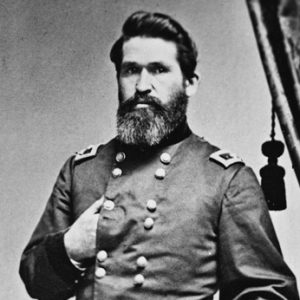 James Blunt
James Blunt 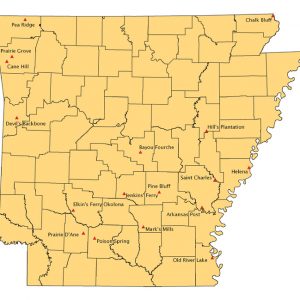 Civil War Events Map
Civil War Events Map 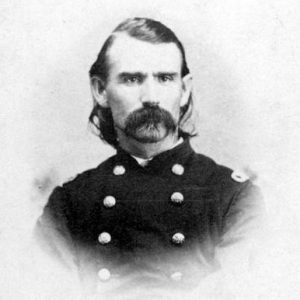 William Cloud
William Cloud 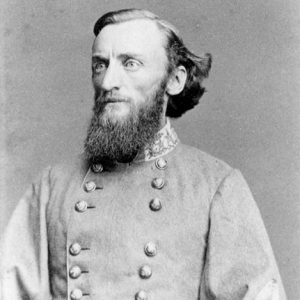 John Marmaduke
John Marmaduke 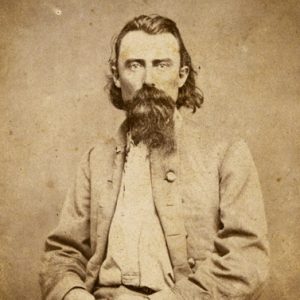 Joseph Shelby
Joseph Shelby 



Comments
No comments on this entry yet.